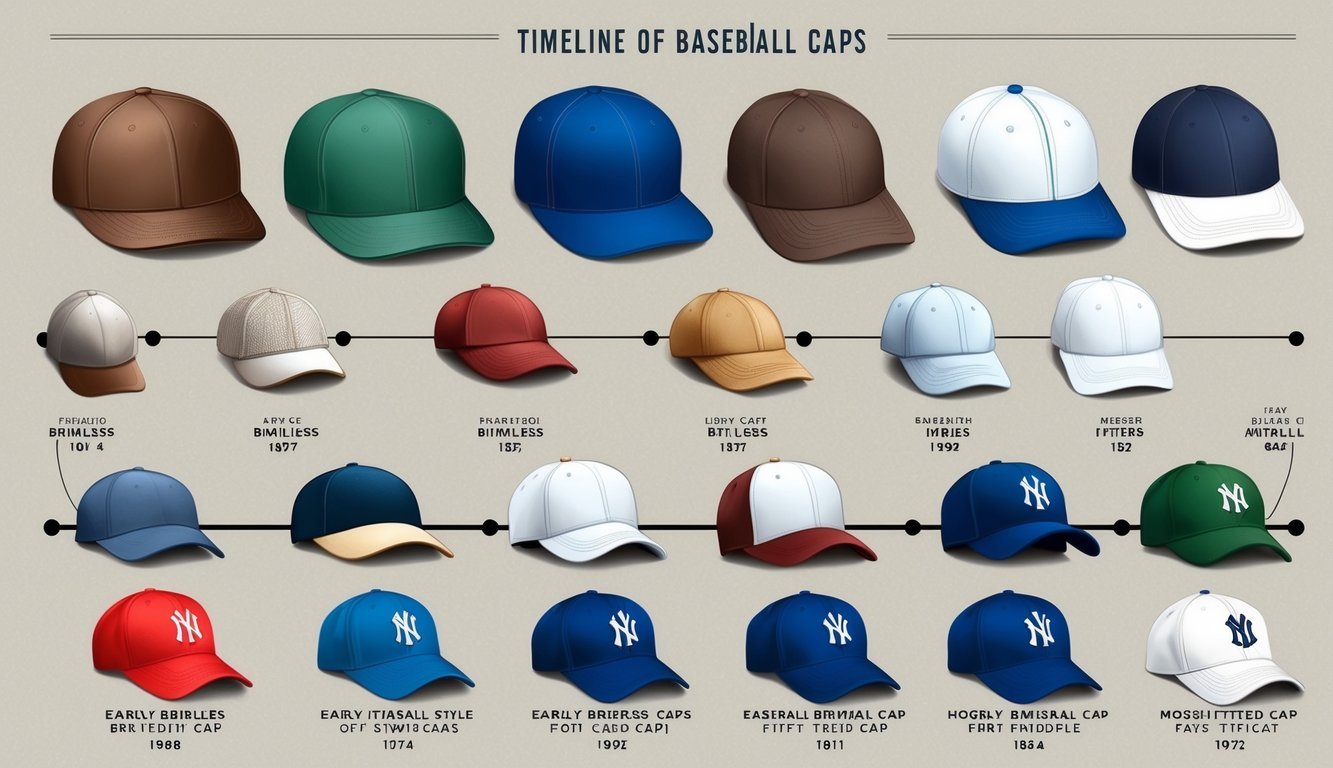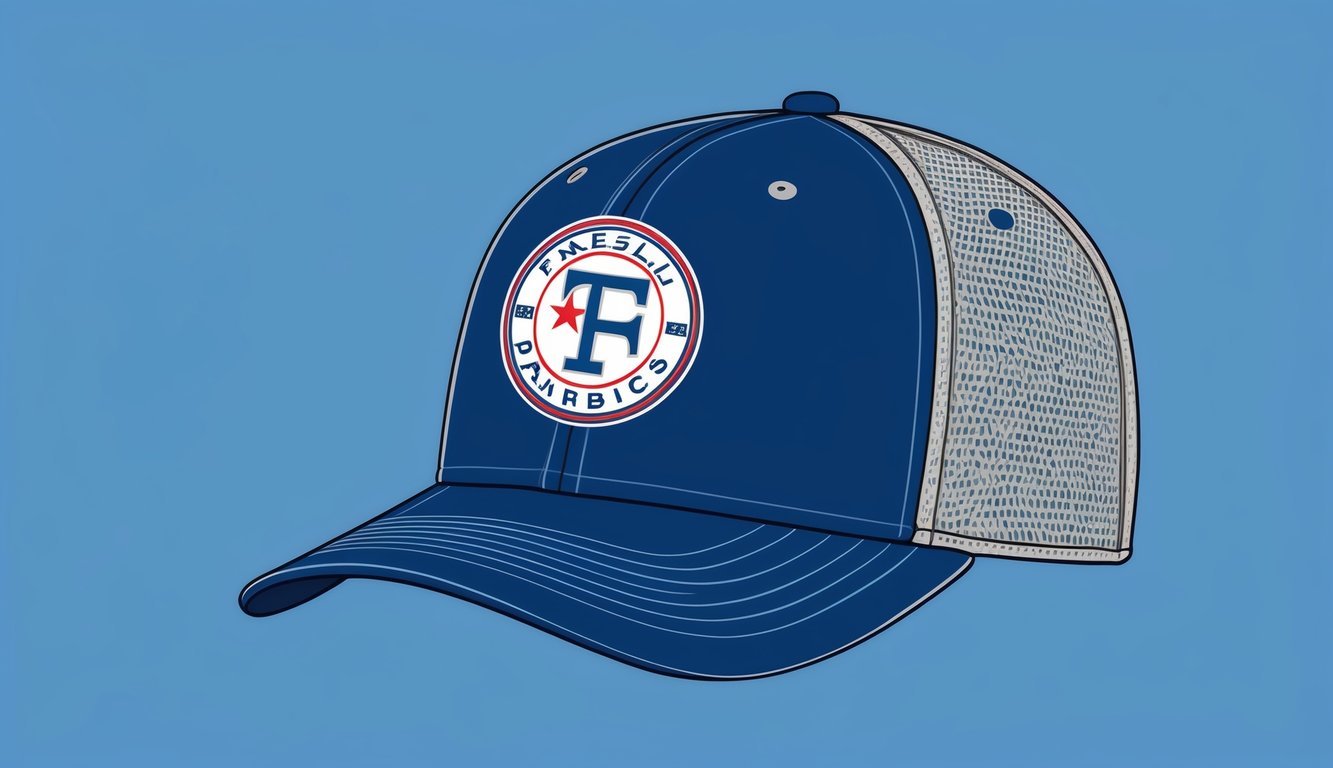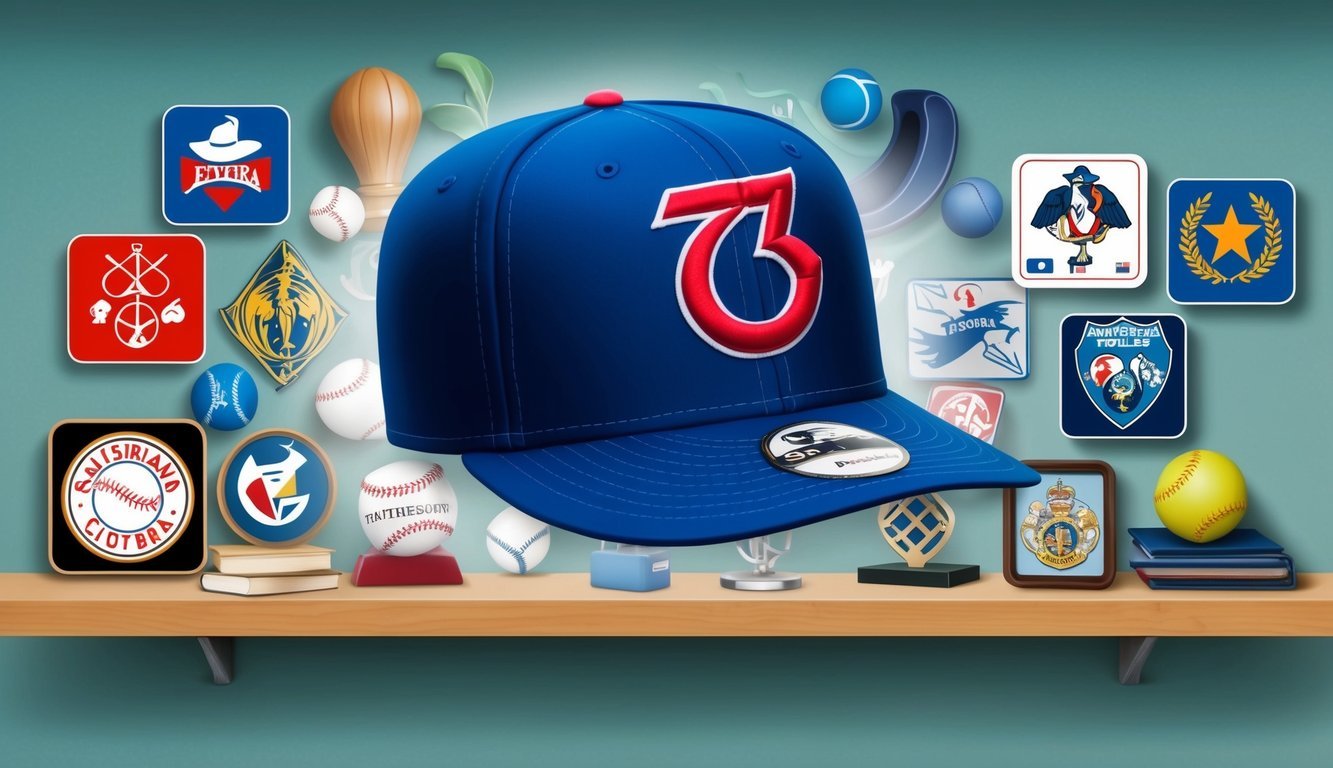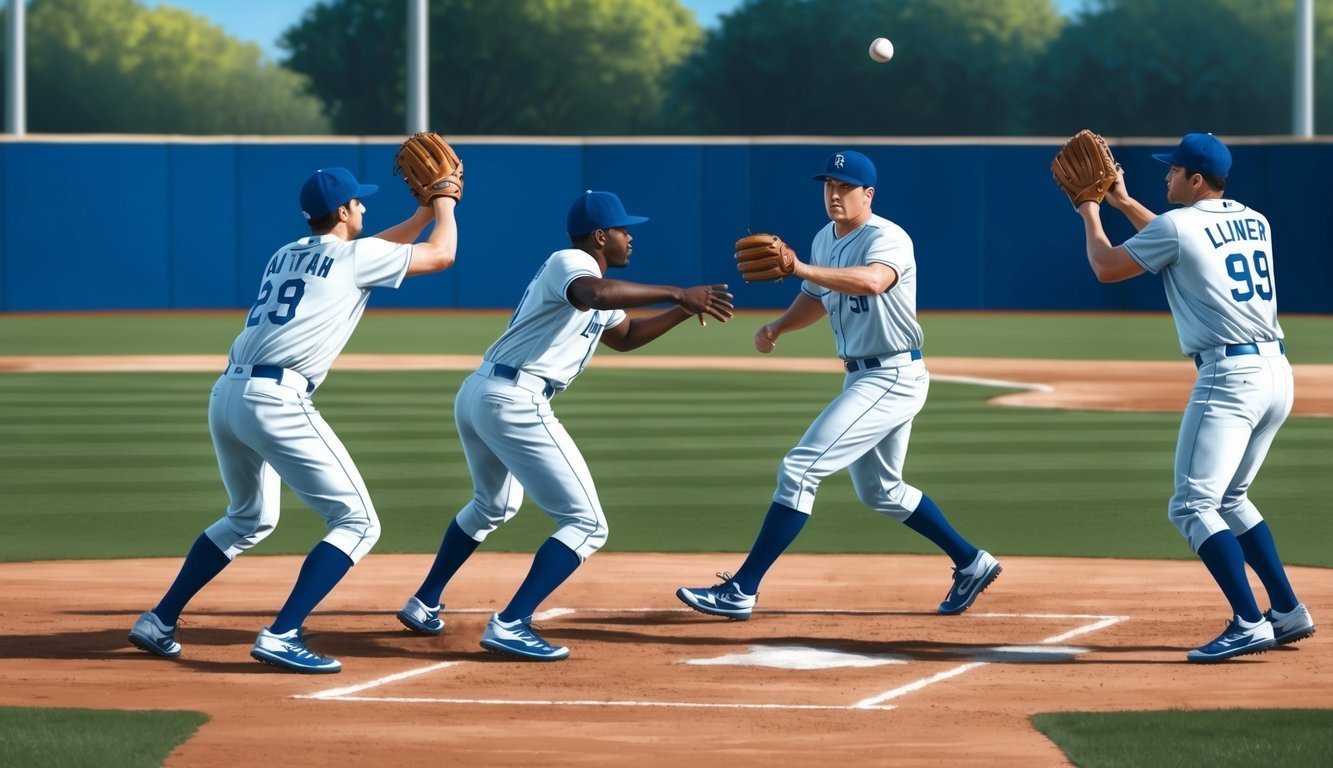Baseball has long been associated with its iconic headwear.
From Little League to the Major Leagues, players step onto the diamond sporting their team’s cap. Baseball players wear hats primarily to shield their eyes from the sun and stadium lights.
This enhances their ability to track fly balls and make crucial plays.
These caps serve multiple purposes beyond sun protection.
They absorb sweat, keeping players cool and focused during intense games.
Team logos and colors proudly displayed on hats foster a sense of identity and unity among players and fans alike.
The baseball cap’s role has evolved over time.
What began as a practical accessory has become an integral part of the sport’s culture and fashion.
Today, baseball hats are not just functional gear but also cherished collectibles and fashion statements worn by fans worldwide.
The Importance of Baseball Hats in the Game
Baseball hats are more than just a fashion statement.
They play a crucial role in player performance and comfort on the field.
Protection Against the Elements
Baseball hats shield players from harsh sunlight and unexpected weather.
The brim blocks direct sunlight, preventing squinting and reducing glare that could interfere with catching or hitting the ball.
This is especially vital for outfielders who often face the sun while tracking fly balls.
On rainy days, hats keep water out of players’ eyes.
They also help during night games by shielding eyes from bright stadium lights.
Hats offer protection against sunburn on long, sunny afternoons at the ballpark.
The shade they provide helps players stay cool and comfortable throughout the game.
Enhancing Player Focus
Baseball hats contribute significantly to a player’s concentration.
By keeping sweat, hair, and environmental distractions at bay, they allow athletes to maintain laser-like focus on the game.
Moreover, the brim of the hat helps shield players’ eyes from the sun, ensuring they can track the ball’s trajectory more effectively.
Additionally, many players have developed habits that enhance their performance, which is often why baseball players chew gum; it helps with anxiety management, keeps their mouths moist, and can even improve their overall rhythm while standing at the plate.
Ultimately, these small elements combine to create an environment where players can thrive under pressure.
The familiar weight and feel of a hat can be comforting, helping players get into their competitive mindset.
Many develop pre-game rituals involving their caps.
Hats also create a sense of team unity.
Matching caps reinforce team spirit and camaraderie among players.
Some players use their hats to store notes or as part of their pitching strategy, further integrating them into gameplay.
Baseball Hats as a Symbol of Team Identity
Baseball hats serve as powerful emblems of team identity, fostering a sense of unity and pride among players and fans alike.
These iconic headpieces showcase team colors and logos, becoming instantly recognizable symbols of baseball franchises.
Uniting Players and Fans
Baseball hats create a visual bond between players on the field and supporters in the stands.
When fans don their team’s cap, they feel a special connection to the players and the game.
This shared headwear transforms spectators into active participants in the team’s identity.
MLB teams often give away branded hats during special promotions, strengthening the link between the franchise and its community.
The simple act of wearing a team hat can spark conversations between strangers, building camaraderie among fans.
Showcasing Team Pride and Legacy
A baseball hat’s design often incorporates elements that reflect a team’s history and values.
Logos and color schemes evolve over time, with each iteration telling a story of the franchise’s journey.
Classic designs like the New York Yankees’ interlocking “NY” or the Boston Red Sox’s iconic “B” have become synonymous with baseball tradition.
These enduring symbols on hats represent more than just a team – they embody decades of triumphs, heartbreaks, and unforgettable moments.
Players wearing team hats during press conferences and public appearances reinforce their commitment to the franchise.
This visible display of loyalty helps maintain a strong team identity both on and off the field.
The Evolution of Baseball Caps in History

Baseball caps have transformed from simple sun shields to iconic fashion statements over the years.
Their journey reflects changes in technology, style, and cultural significance.
From Function to Fashion
The New York Knickerbockers introduced the first baseball cap in 1849.
It was a simple straw hat designed to shield players’ eyes from the sun.
By the 1860s, teams switched to wool caps for durability.
These early caps had shorter brims and softer crowns than today’s versions.
In 1901, the Detroit Tigers made history by adding their logo to the cap, starting a new tradition.
Teams began using caps to express their identity.
As the 20th century progressed, baseball caps became more than just part of the uniform.
By the 1970s, fans started wearing team caps to show support.
This trend exploded in the 1980s and 1990s, turning baseball caps into popular streetwear.
Today, they’re a global fashion staple, worn by people of all ages and backgrounds.
Technological Advancements in Cap Design
Baseball cap design has seen numerous improvements over time.
In the 1890s, manufacturers added air holes for better ventilation.
The 1920s and 1930s brought longer, firmer brims to provide better sun protection.
Materials have also evolved.
While wool remained popular for decades, newer fabrics like polyester and cotton blends offer improved moisture-wicking and breathability.
Some caps now feature UV-protective materials to shield players from harmful sun rays.
Modern caps often incorporate sweatbands to absorb perspiration and mesh panels for enhanced airflow.
Adjustable closures have replaced fixed sizes, making caps more versatile.
These innovations have made baseball caps more comfortable and functional for both players and fans alike.
Design and Features of Baseball Caps

Baseball caps have evolved to blend style with functionality.
These iconic headpieces are crafted to enhance player performance while maintaining a classic look on and off the field.
Materials and Construction
Baseball caps are typically made from durable materials like cotton, polyester, or wool.
The crown consists of six panels stitched together, with eyelets for ventilation.
A button tops the crown, while a stiff brim extends from the front.
Modern caps often incorporate moisture-wicking fabrics to keep players cool and dry during intense games.
High-quality caps feature reinforced seams for longevity.
Some designs include a plastic or metal snap at the back for adjustability.
Fitted caps, however, come in specific sizes without adjustable closures.
The underside of the brim is usually dark to reduce glare.
Fit and Comfort Considerations
A proper fit is crucial for baseball caps.
They should sit comfortably on the head without being too tight or loose.
The brim should rest just above the eyes to provide optimal sun protection.
Many players prefer a slightly curved brim for better peripheral vision.
Comfort features include sweatbands inside the cap to absorb perspiration.
Some caps have mesh panels for increased airflow.
The weight of the cap is also important – lighter materials prevent fatigue during long games.
Caps come in various sizes to accommodate different head shapes.
Some players opt for a looser fit to allow for hair tucked underneath.
The right fit ensures the cap stays in place during quick movements and doesn’t distract from gameplay.
The Cultural Impact of Baseball Hats Beyond the Sport

Baseball hats have transcended their origins on the diamond to become a global fashion phenomenon and cultural icon.
Their versatility and symbolism have woven them into the fabric of everyday life.
In Fashion and Lifestyle
Baseball caps have become a staple in wardrobes worldwide.
Celebrities often sport these hats, turning them into coveted fashion accessories.
From runways to street style, baseball caps add a casual flair to any outfit.
Designers have reimagined the classic shape with luxurious materials and bold logos.
The humble cap now appears in high-end boutiques alongside couture pieces.
This fusion of sporty and chic has created a new category of athleisure wear.
Baseball caps also serve practical purposes in daily life.
They shield eyes from the sun, hide bad hair days, and allow wearers to express their personalities through team logos or brand choices.
As a Cultural Icon
The baseball cap has become a symbol of American culture.
It represents a laid-back, approachable attitude that resonates globally.
The cap’s journey from the ballpark to international streetwear reflects changing social norms and values.
In music and film, the baseball cap often signifies a down-to-earth character or everyman hero.
It’s a visual shorthand for relatability and authenticity.
Politicians don caps to appear more approachable during campaigns.
The hat’s ability to display logos makes it a powerful marketing tool.
Brands use this to create walking advertisements and build customer loyalty.
Caps now serve as canvases for personal expression, showcasing everything from favorite teams to social causes.
